The Top 15 Things to Do and See in Marrakech, Morocco
Marrakech, a city often called the "Red City" for its distinct terracotta buildings, is a mesmerizing blend of old and new. With its labyrinthine streets, bustling markets, and serene gardens, Marrakech offers a rich tapestry of cultural experiences. Here are the top 15 things to do and see in this enchanting Moroccan city.
But First, Find Your Ideal Stay in Marrakech As you delve into the vibrant culture and historic beauty of Marrakech, consider the diverse accommodations available on Have You Got. Located near major attractions, these stays will provide convenience and enhance your experience in this enchanting city.
1. Explore the Medina and Jemaa el-Fnaa
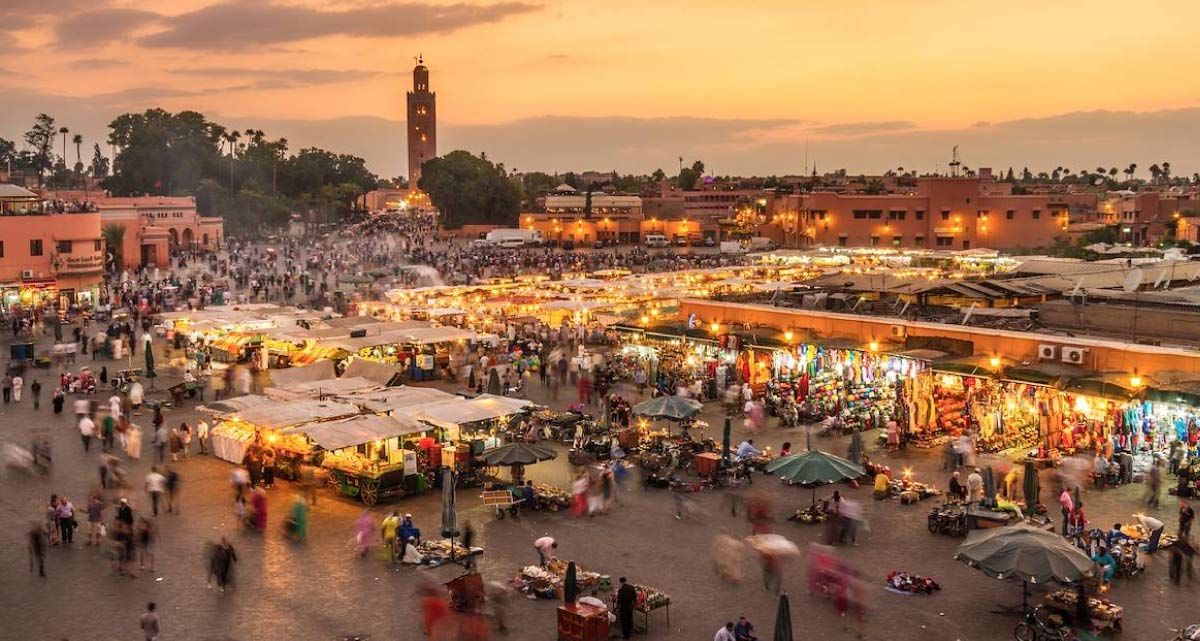
The Medina of Marrakech, a UNESCO World Heritage site, is the city's historic core, a place where the past and present intertwine. The Medina is a labyrinth of narrow streets filled with souks, where vendors sell everything from spices and textiles to handcrafted goods and traditional Moroccan lamps. This area is not just a market; it’s a living, breathing cultural hub where locals and tourists alike come together to experience the vibrant atmosphere of Marrakech.
At the heart of the Medina lies Jemaa el-Fnaa, one of the world’s most famous squares. By day, this expansive square is a marketplace filled with juice vendors, snake charmers, and henna artists. As night falls, the square transforms into a lively carnival of food stalls, musicians, and storytellers, offering an authentic taste of Moroccan culture. Jemaa el-Fnaa has been a central gathering place for centuries, embodying the spirit and energy of Marrakech.
Location: Medina, Marrakech, Morocco
Opening Hours: Open 24 hours
Review: "Jemaa el-Fnaa is where the essence of Marrakech truly comes alive. It's chaotic, vibrant, and utterly fascinating—a must-see for any visitor." - Sarah L., Anywhere We Roam
Website: https://visitmarrakech.com/en/listing/the-medina-of-marrakech/
2. Visit the Majorelle Garden
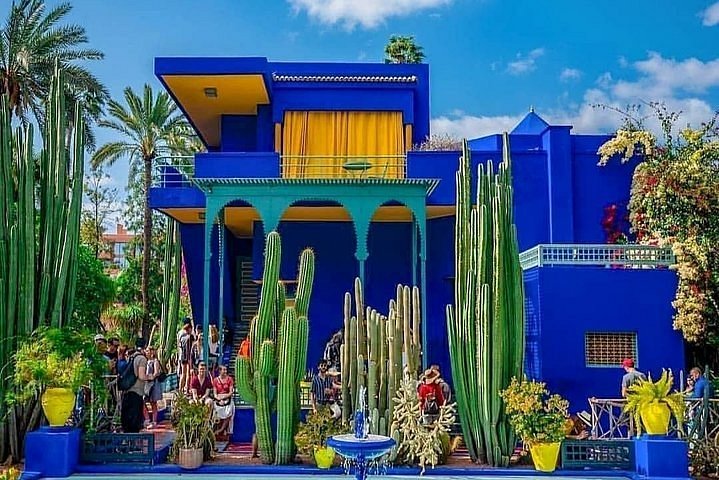
The Majorelle Garden is one of Marrakech’s most beloved attractions, a vibrant oasis that offers a peaceful retreat from the city’s bustling streets. Created in the 1920s by the French painter Jacques Majorelle, this garden is a stunning blend of art and nature. Majorelle spent four decades designing this space, filling it with exotic plants from all over the world and painting the buildings in a striking shade of cobalt blue, now famously known as "Majorelle blue."
In the 1980s, the garden was purchased and restored by the fashion designer Yves Saint Laurent and his partner Pierre Bergé. Today, it also houses the Berber Museum, which celebrates the rich culture of Morocco’s indigenous people. The garden’s lush greenery, serene fountains, and vibrant colours make it a must-visit spot in Marrakech, offering a tranquil environment for reflection and relaxation amidst the city's hustle.
Location: Rue Yves Saint Laurent, Marrakech, Morocco
Opening Hours: 8:00 AM - 6:00 PM
Ticket Cost: 120 MAD for adults, 70 MAD for students
Review: "The Majorelle Garden is a serene escape, blending art, nature, and history. The vibrant colours and peaceful atmosphere make it a unique and unforgettable experience." - Michael T., Expert Vagabond
Website: www.jardinmajorelle.com
3. Discover the Bahia Palace
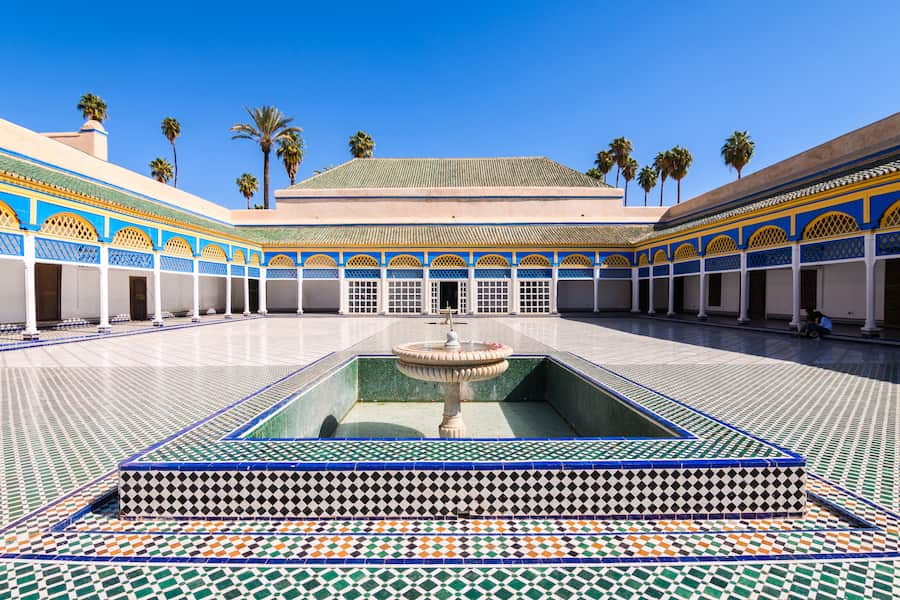
The Bahia Palace, whose name means "brilliance," is a shining example of Moroccan architecture and craftsmanship. Built in the late 19th century by Si Moussa, the Grand Vizier of Sultan Hassan I, the palace was designed to be the grandest palace of its time, a symbol of wealth and power. The palace covers nearly eight hectares and includes a harem section, extensive gardens, and over 150 rooms, each designed with exquisite attention to detail.
The architecture of the Bahia Palace is a stunning blend of Islamic and Moroccan styles, characterized by intricate stucco work, zellij tiles, and carved wooden ceilings. Visitors can wander through the opulent rooms, which are adorned with marble, painted wood, and colourful tiles, and explore the tranquil gardens filled with orange trees and fountains. The Bahia Palace is a testament to the grandeur of Marrakech’s past and remains one of the best-preserved historical sites in the city.
Location: Rue Riad Zitoun el Jdid, Marrakech, Morocco
Opening Hours: 9:00 AM - 5:00 PM
Ticket Cost: 70 MAD
Review: "The Bahia Palace is a stunning example of Moroccan architecture. Walking through its rooms and courtyards, you can almost feel the grandeur of its past." - Emma K., TripAdvisor
Website: https://palaisbahia.com/en/
4. Wander Through the Saadian Tombs
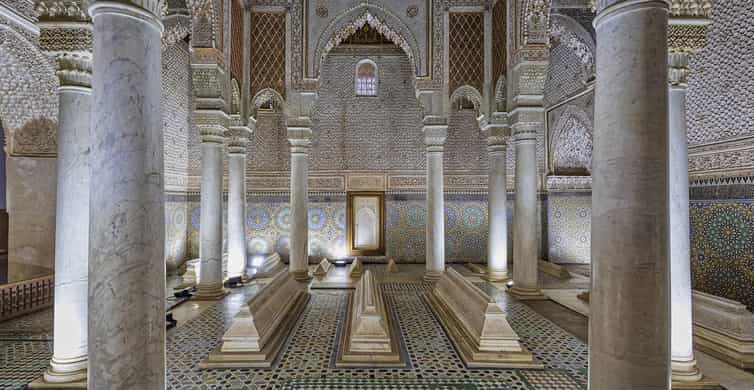
The Saadian Tombs, dating back to the late 16th century, are a hidden gem in Marrakech that was only rediscovered in 1917. These tombs were built by Sultan Ahmad al-Mansur of the Saadian dynasty and serve as the final resting place for about 60 members of the Saadian family. The tombs are divided into two main mausoleums, each decorated with stunning stucco work, Italian Carrara marble, and colourful zellij tiles, reflecting the opulence of the Saadian era.
The most impressive of these is the Hall of Twelve Columns, where Sultan Ahmad al-Mansur is buried. The tombs are surrounded by a peaceful garden, filled with roses, palm trees, and other greenery, offering a serene contrast to the bustling Kasbah district nearby. Visiting the Saadian Tombs provides a glimpse into the rich history and craftsmanship of the Saadian dynasty, making it a must-see for history enthusiasts.
Location: Rue de la Kasbah, Marrakech, Morocco
Opening Hours: 9:00 AM - 5:00 PM
Ticket Cost: 70 MAD
Review: "The Saadian Tombs are a hauntingly beautiful reminder of Marrakech's rich history. The craftsmanship is extraordinary, and the site is wonderfully preserved." - Alice T., Anywhere We Roam
Website: https://saadiantombs.com/
5. Experience the Koutoubia Mosque
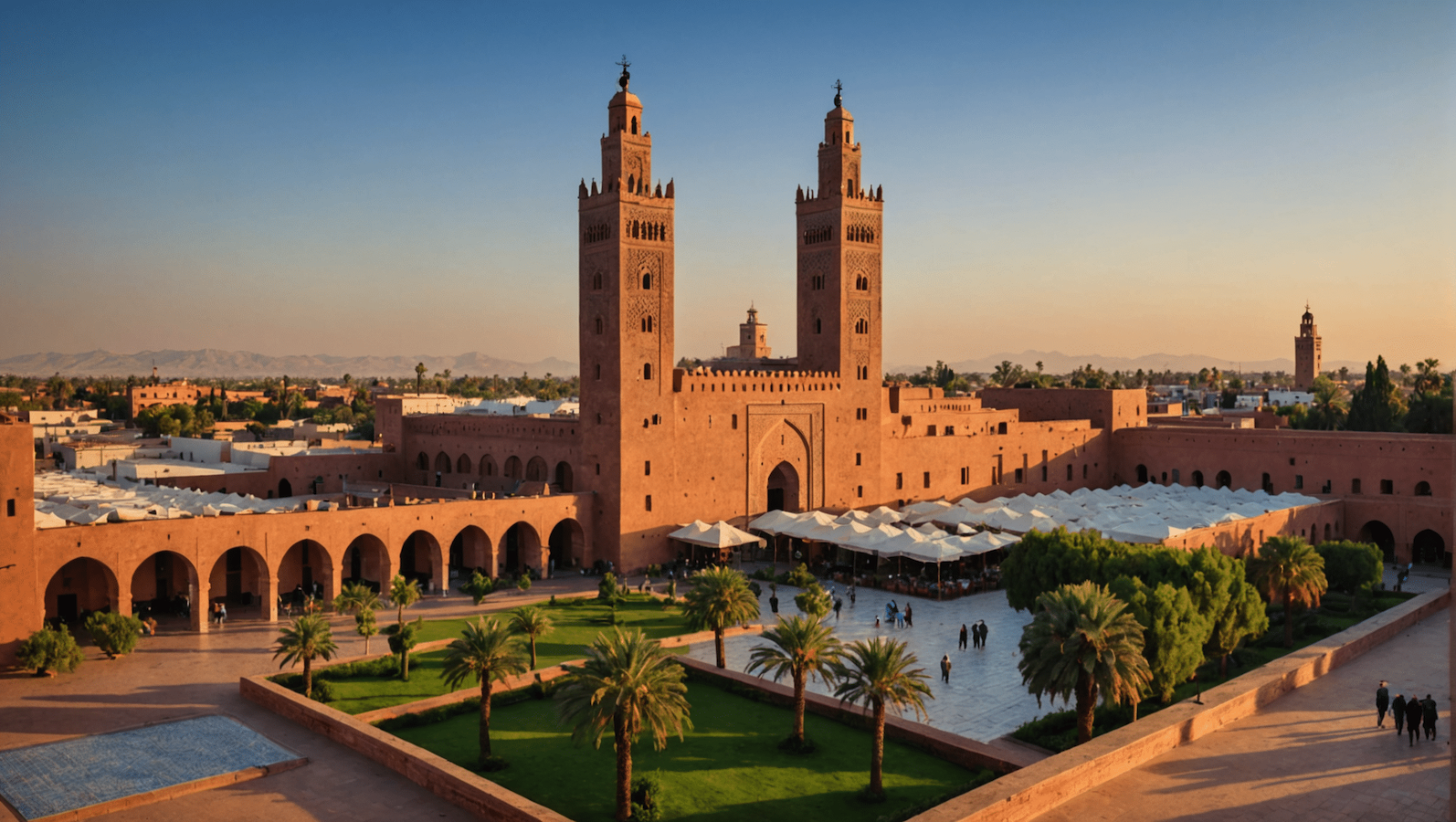
The Koutoubia Mosque is the largest mosque in Marrakech and one of the city’s most iconic landmarks. Built in the 12th century under the reign of Almohad Caliph Yaqub al-Mansur, the mosque is a masterpiece of Almohad architecture, known for its towering minaret, which stands 77 meters high. The mosque’s name, "Koutoubia," comes from the Arabic word for "bookseller," as the area around the mosque was once a thriving book market.
While non-Muslims are not permitted to enter the mosque, the exterior and the surrounding gardens are open to visitors. The Koutoubia Gardens, which stretch out from the mosque towards Jemaa el-Fnaa, are a lovely place to stroll and relax, with beautifully manicured flowerbeds, palm trees, and fountains. The Koutoubia Mosque is not only a place of worship but also a significant historical and architectural landmark in Marrakech, offering a glimpse into the city’s Islamic heritage.
Location: Avenue Mohammed V, Marrakech, Morocco
Opening Hours: Open 24 hours (for the exterior and gardens)
Ticket Cost: Free
Review: "The Koutoubia Mosque is an architectural wonder. The minaret is breathtaking, and the surrounding gardens offer a peaceful retreat." - John D., Expert Vagabond
6. Explore the Marrakech Museum

The Marrakech Museum, housed in the stunning Dar Menebhi Palace, is a treasure trove of Moroccan art, history, and culture. The palace itself, built in the late 19th century by Mehdi Menebhi, a wealthy Moroccan minister, is a beautiful example of Andalusian architecture, featuring a large central courtyard, intricate cedarwood carvings, and colourful zellij tiles.
The museum’s collection includes traditional Moroccan pottery, textiles, and jewelry, as well as contemporary art from Moroccan artists. One of the highlights is the collection of ancient manuscripts and coins, which offer a glimpse into the country’s rich Islamic heritage. The museum frequently hosts temporary exhibitions and cultural events, making it a dynamic part of Marrakech’s cultural scene. Visiting the Marrakech Museum is an opportunity to explore both the city’s history and its vibrant artistic heritage.
Location: Place Ben Youssef, Marrakech, Morocco
Opening Hours: 9:00 AM - 6:30 PM
Ticket Cost: 50 MAD
Review: "The Marrakech Museum is a must-see for anyone interested in Moroccan culture. The building is as impressive as the exhibits inside, and the atmosphere is truly unique." - Sarah L., Anywhere We Roam
Website: https://marrakechmuseum.com/
7. Visit the Ben Youssef Madrasa
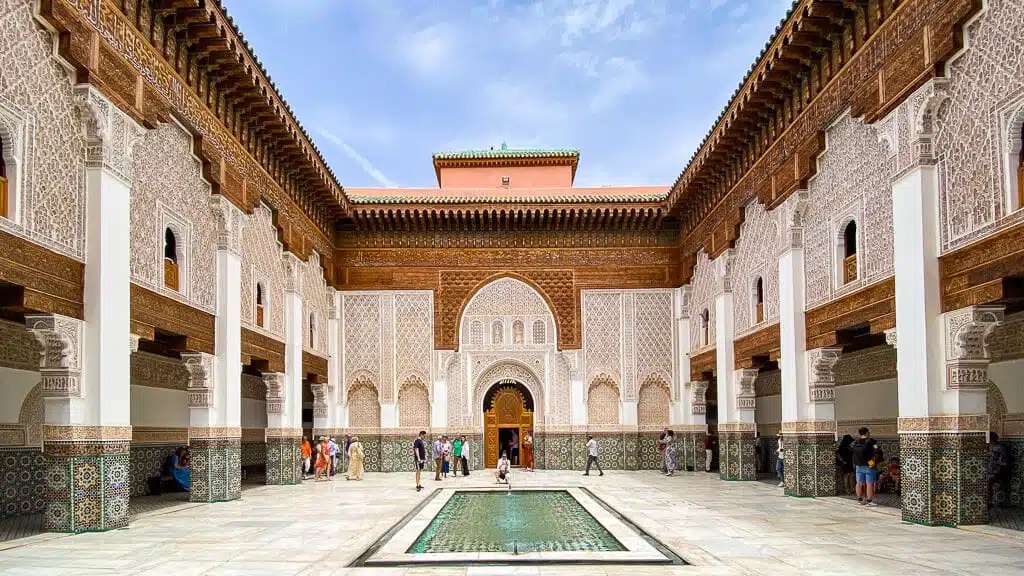
The Ben Youssef Madrasa is one of the most historically significant and architecturally stunning sites in Marrakech. Founded in the 14th century by the Marinid Sultan Abu al-Hasan and later expanded in the 16th century under the Saadian dynasty, the madrasa served as an Islamic college for students studying the Quran and Islamic law. The architecture of the Ben Youssef Madrasa is a masterpiece of Moroccan design, with its central courtyard featuring a large reflecting pool, intricate stucco work, and colourful zellij tiles.
Visitors can explore the student dormitories, which are arranged around a series of small courtyards. These rooms are austere in contrast to the ornate public areas, providing insight into the monastic lifestyle of the students who once lived and studied here. The madrasa was closed in 1960 but has since been restored and opened to the public as a historical site. It remains one of the most visited attractions in Marrakech, offering a glimpse into the city’s rich educational and religious history. The Ben Youssef Madrasa is an essential stop for anyone interested in Islamic art and architecture.
Location: Rue Assouel, Marrakech, Morocco
Opening Hours: 9:00 AM - 6:00 PM
Ticket Cost: 60 MAD
Review: "The Ben Youssef Madrasa is an architectural gem, rich in history and beauty. The details in the stucco and tile work are mesmerizing, making it a highlight of any visit to Marrakech." - Michael T., Expert Vagabond
Website: https://www.medersabenyoussef.ma/en/
8. Explore the Jardin Menara
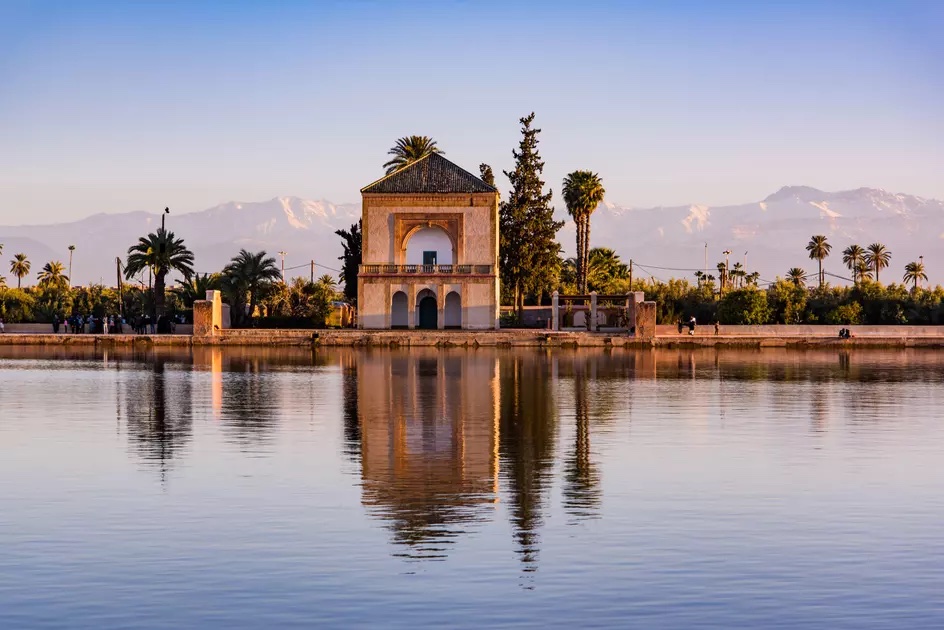
The Jardin Menara, established in the 12th century, is a vast and tranquil garden complex located just outside the city walls of Marrakech. Originally created by the Almohad dynasty as an agricultural estate and retreat, the gardens feature a large reflective pool fed by an ancient hydraulic system from the Atlas Mountains. The surrounding landscape includes olive groves, fruit orchards, and rows of palm trees, creating a peaceful and picturesque environment.
The centrepiece of the Menara Gardens is the pavilion overlooking the pool, added during the 16th century by the Saadian sultan Ahmad al-Mansur. The pavilion, with its green-tiled roof and simple yet elegant design, was a place of leisure for the sultans, offering them a cool retreat from the heat of the city. The Menara Gardens provide stunning views of the Atlas Mountains, especially at sunset, making it a popular spot for both locals and tourists seeking a moment of serenity.
Location: Avenue de la Menara, Marrakech, Morocco
Opening Hours: 8:00 AM - 5:00 PM
Ticket Cost: Free
Review: "The Menara Gardens offer stunning views and a serene atmosphere, perfect for unwinding and escaping the hustle and bustle of Marrakech." - Emma K., TripAdvisor
Website: https://menaragardens.com/
9. Shop in the Souks
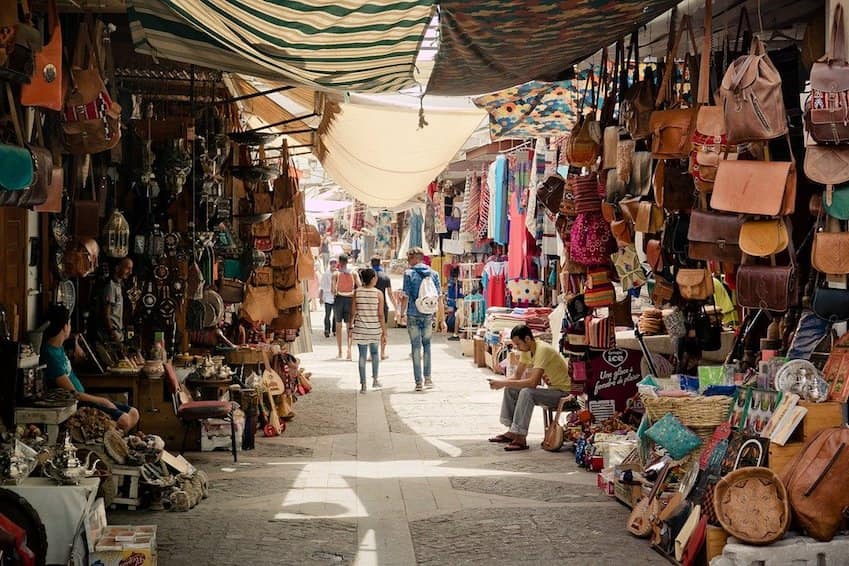
The souks of Marrakech are a vibrant and essential part of the city's culture, offering an exhilarating shopping experience in the heart of the Medina. These bustling markets are a labyrinth of narrow alleys lined with stalls selling everything from spices, textiles, and leather goods to pottery, jewelry, and traditional Moroccan lanterns. Each area of the souks specializes in a specific type of product, such as the Souk Semmarine, known for its textiles and clothing, or the Souk des Teinturiers, famous for its leather goods and dyeing workshops.
Shopping in the souks is more than just a retail experience; it’s an immersion into the culture and daily life of Marrakech. Haggling is an integral part of the process, and vendors often expect customers to negotiate prices. In addition to shopping, the souks offer an opportunity to witness traditional Moroccan craftsmanship, with artisans creating handmade items using techniques that have been passed down through generations. Exploring the souks is an adventure, with each turn revealing new treasures and hidden gems.
Location: Medina, Marrakech, Morocco
Opening Hours: 9:00 AM - 7:00 PM
Ticket Cost: Free (haggling expected)
Review: "The souks of Marrakech are a sensory delight, offering a unique blend of shopping and culture. The variety of goods and the vibrant atmosphere make it a must-visit." - Alice T., Anywhere We Roam
10. Visit the El Badi Palace

The El Badi Palace, once a magnificent royal residence, now stands as an evocative ruin that offers a fascinating glimpse into the grandeur of Marrakech's past. Commissioned by Sultan Ahmad al-Mansur of the Saadian dynasty in the late 16th century, the palace was intended to be the most opulent in Morocco. It was constructed using the finest materials, including Italian marble, gold from Sudan, and onyx from India, and was designed to showcase the wealth and power of the Saadian rulers.
The name "El Badi" means "The Incomparable," reflecting the sultan's ambition for the palace to surpass all others in its splendor. The palace featured vast courtyards, lush gardens, and over 350 rooms, including reception halls, private quarters, and a harem. Unfortunately, the palace's glory was short-lived. In the 17th century, Sultan Moulay Ismail, the founder of the Alaouite dynasty, stripped the palace of its riches to build his new capital in Meknes, leaving El Badi in ruins. Today, visitors can explore the remains of the palace, with its towering walls, large central courtyard, and remnants of ornate decoration offering a hauntingly beautiful reminder of its former magnificence.
Location: Ksibat Nhass, Marrakech, Morocco
Opening Hours: 9:00 AM - 5:00 PM
Ticket Cost: 70 MAD
Review: "The El Badi Palace is a haunting reminder of Marrakech's royal past, offering stunning views and a powerful sense of history." - John D., Expert Vagabond
Website: https://badipalace.com/
11. Discover the Secret Garden (Le Jardin Secret)
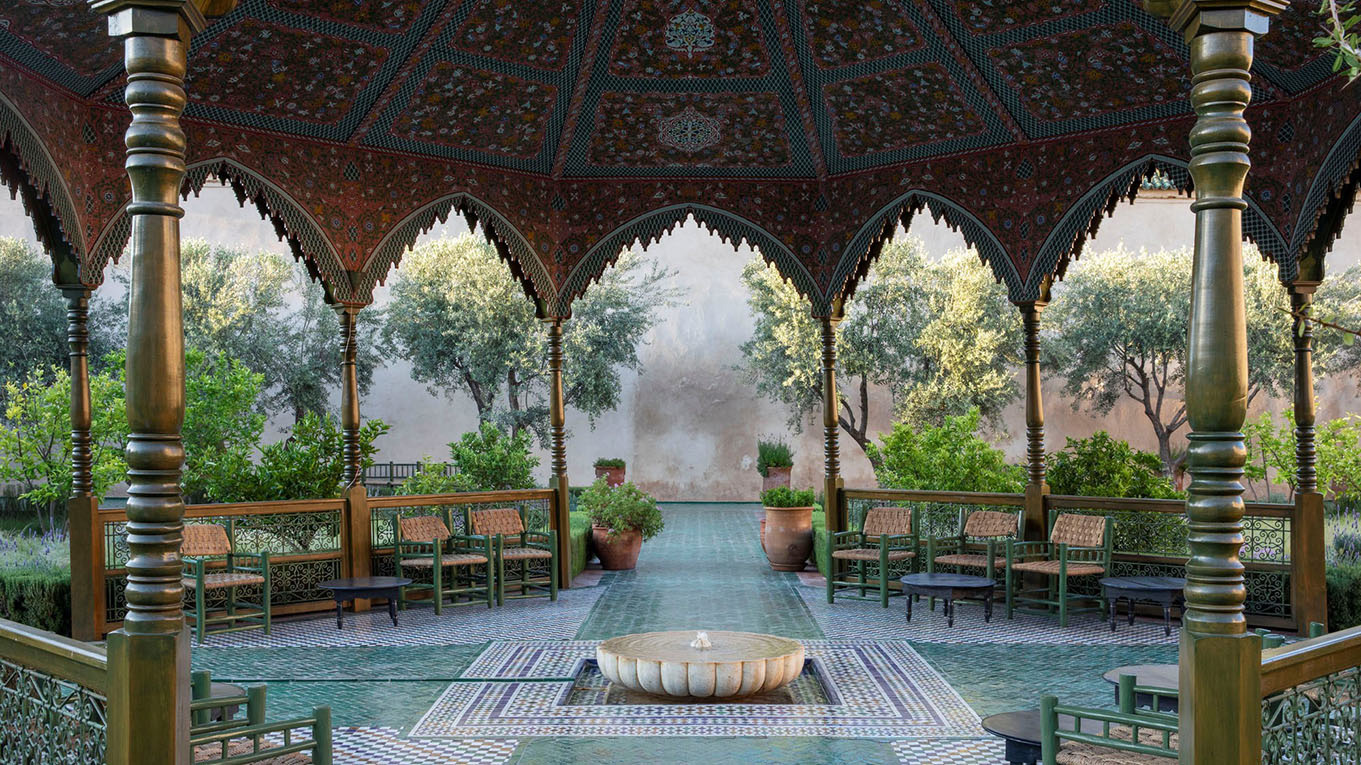
Le Jardin Secret, hidden within the labyrinthine streets of the Medina, is a beautifully restored garden that dates back over 400 years. Originally created during the Saadian dynasty, the garden was designed as a private sanctuary for the sultans and their courtiers. After falling into disrepair, it was meticulously restored and reopened to the public in 2016, offering a rare glimpse into the private world of Marrakech’s elite.
The garden is divided into two main sections: the Exotic Garden and the Islamic Garden. The Exotic Garden is filled with a variety of plants from around the world, including cacti, palms, and flowering shrubs. The Islamic Garden, on the other hand, follows traditional Islamic garden design principles, with symmetrical plantings, water channels, and a central pavilion. The garden also includes a tower that offers panoramic views over the Medina and the Atlas Mountains, making it a perfect spot to relax and enjoy the serene environment.
Location: Rue Mouassine, Marrakech, Morocco
Opening Hours: 9:30 AM - 7:30 PM
Ticket Cost: 60 MAD
Review: "Le Jardin Secret is a hidden gem in the Medina. The gardens are exquisitely maintained, and the peaceful atmosphere is a welcome contrast to the busy streets outside." - Sarah L., Anywhere We Roam
Website: www.lejardinsecretmarrakech.com
12. Visit the Dar Si Said Museum
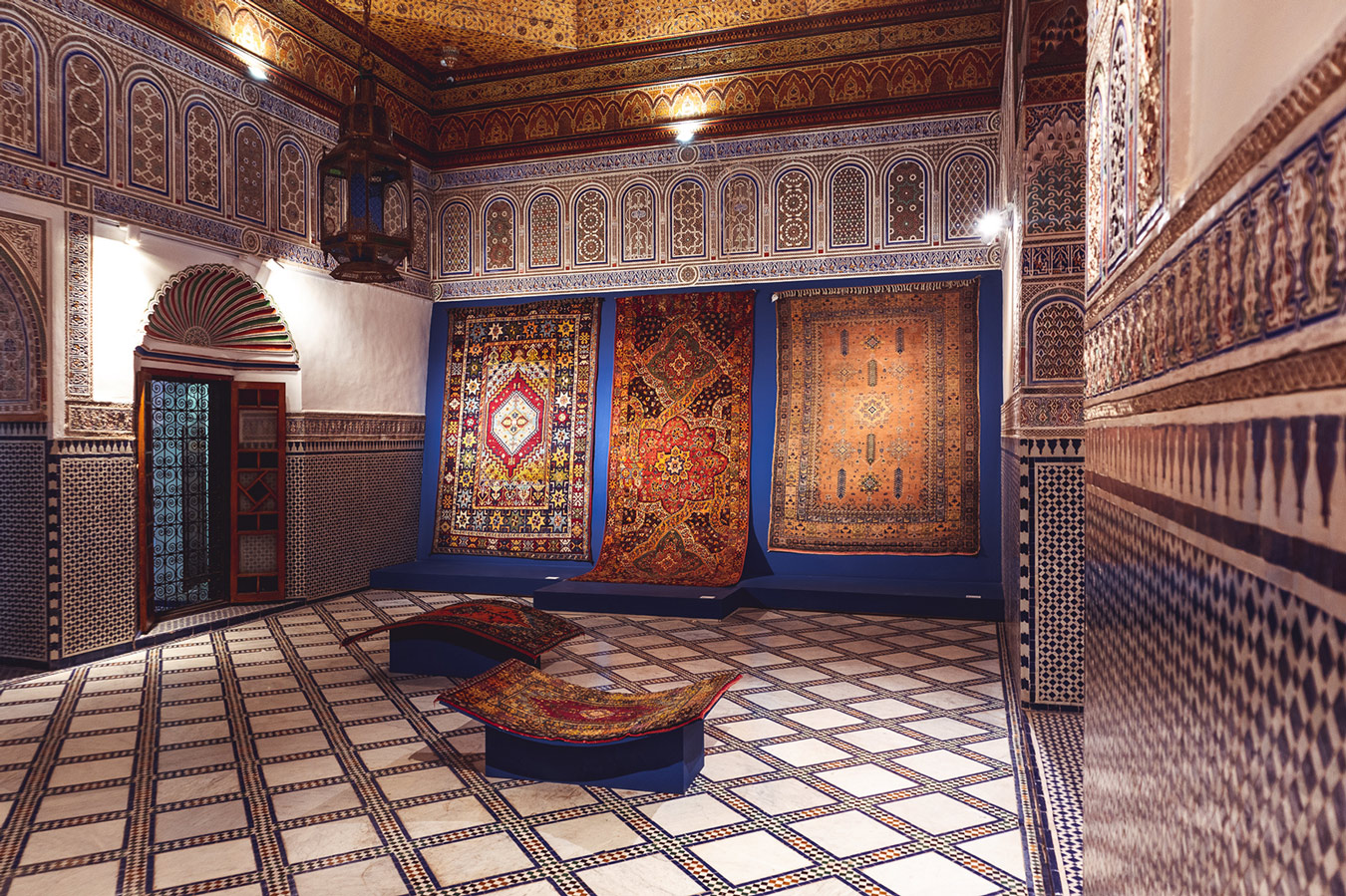
The Dar Si Said Museum, also known as the Museum of Moroccan Arts, is housed in a beautiful 19th-century palace that was once the home of Si Said, the brother of Ba Ahmed, the Grand Vizier to Sultan Moulay Hassan I. The museum is a treasure trove of Moroccan art and craftsmanship, showcasing a wide range of artifacts, including traditional Moroccan carpets, Berber jewelry, pottery, and textiles. Each piece tells a story of Morocco’s cultural and artistic evolution, offering visitors a deep dive into the country’s rich heritage.
The palace itself is a masterpiece of Moroccan architecture, with intricately carved wooden ceilings, vibrant zellij tiles, and tranquil courtyards that provide a serene setting for the museum’s exhibits. The Dar Si Said Museum frequently hosts temporary exhibitions that focus on specific aspects of Moroccan culture, such as the history of Berber art or the influence of Islamic design. A visit to this museum is not only an opportunity to appreciate the beauty of Moroccan art but also a chance to explore a historical palace that offers a glimpse into the lives of Marrakech’s aristocracy.
Location: Rue Riad Zitoun el-Jedid, Marrakech, Morocco
Opening Hours: 10:00 AM - 6:00 PM (Closed on Tuesdays)
Ticket Cost: 50 MAD
Review: "The Dar Si Said Museum is a treasure trove of Moroccan art and history. The palace itself is a masterpiece, and the exhibits offer a deep insight into the country’s cultural heritage." - Emma K., TripAdvisor
Website: https://darsisaid.com/
13. Explore the Mellah (Jewish Quarter)
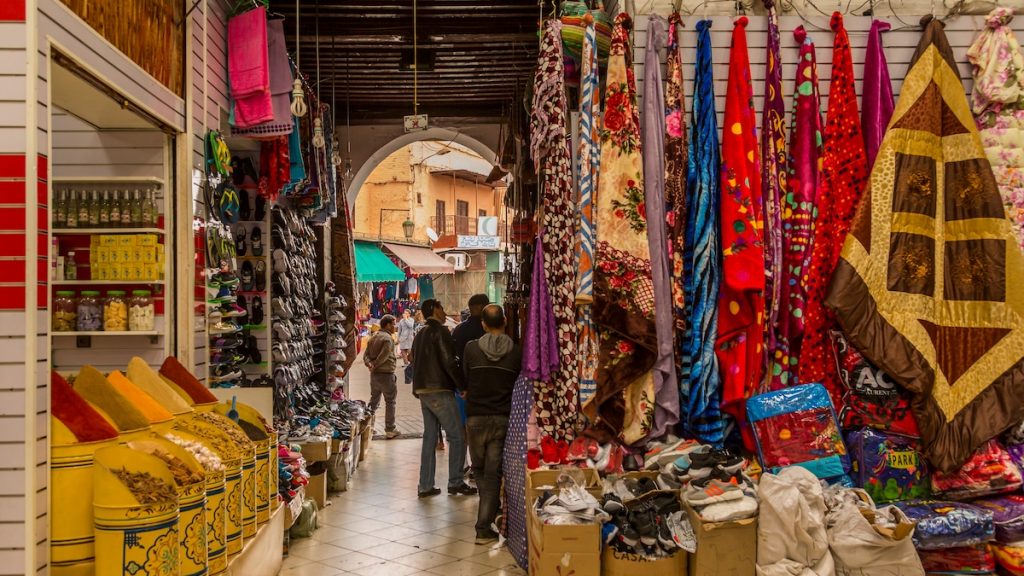
The Mellah, Marrakech's historic Jewish quarter, is a fascinating area rich in history and cultural significance. Established in the 16th century by Sultan Abdallah al-Ghalib, the Mellah was originally created to house the Jewish community of Marrakech, who played a vital role in the city’s economy and trade. The district is characterized by its narrow streets, bustling markets, and distinct architecture, including buildings with wooden balconies and hidden courtyards that differ from the traditional Moroccan styles seen elsewhere in the city.
One of the most significant landmarks in the Mellah is the Lazama Synagogue, one of the oldest synagogues in Marrakech, which remains in use today. The synagogue features a peaceful courtyard filled with flowers and a small museum that details the history of the Jewish community in Marrakech. Another important site is the Miâara Cemetery, the largest Jewish cemetery in Morocco, which offers a poignant reminder of the community’s deep roots in the city. The Mellah is also known for its vibrant spice market, where visitors can find a wide variety of Moroccan spices, herbs, and traditional remedies. Exploring the Mellah provides a deeper understanding of Marrakech’s multicultural heritage and the important role the Jewish community played in shaping the city.
Location: Mellah, Marrakech, Morocco
Opening Hours: Open 24 hours (Synagogue: 9:00 AM - 6:00 PM)
Ticket Cost: Free (Synagogue: Donation recommended)
Review: "The Mellah is a deeply atmospheric part of Marrakech, filled with history and culture. The Lazama Synagogue is a highlight, offering a poignant reminder of the city’s Jewish heritage." - Michael T., Expert Vagabond
14. Visit the Agdal Gardens
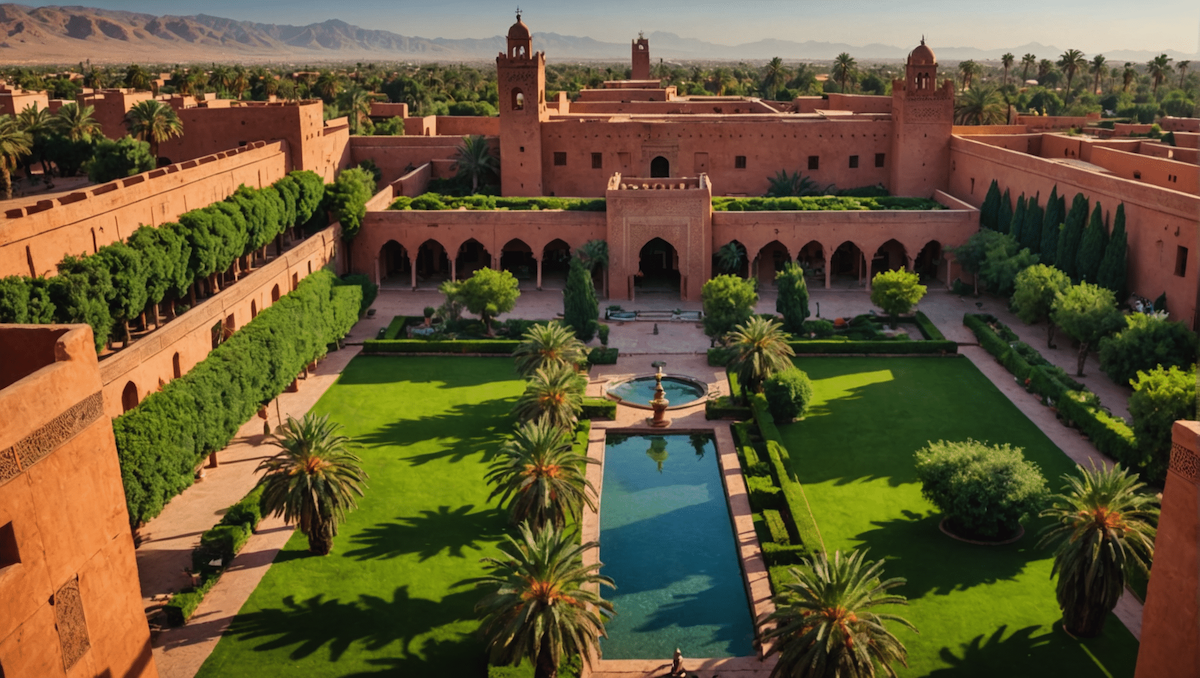
The Agdal Gardens, one of Marrakech’s oldest and most expansive gardens, date back to the 12th century during the reign of the Almohad dynasty. Covering over 400 hectares, these gardens were originally created as a royal orchard and retreat, providing the sultans with a peaceful escape from the city. The gardens are a UNESCO World Heritage site and are renowned for their vast olive groves, citrus trees, and other fruit orchards, which are irrigated by an ancient network of channels fed by the Atlas Mountains.
At the heart of the Agdal Gardens is the Saha, a large man-made lake that served both as a water reservoir and as a training area for the sultan’s troops. The lake is surrounded by orchards and groves, offering a serene and picturesque setting. The Agdal Gardens have long been associated with the royal family, and access to the gardens was historically restricted to the sultans and their courtiers. Today, the Agdal Gardens are open to the public on Fridays and Sundays, offering visitors a chance to explore this historic and beautifully maintained space. The gardens are a popular spot for locals to relax and enjoy the natural beauty, with many families coming to picnic by the lake. The views of the Atlas Mountains from the gardens are particularly stunning, especially in the early morning or late afternoon when the light casts a golden glow over the landscape.
Location: Avenue de la Menara, Marrakech, Morocco
Opening Hours: 9:00 AM - 5:00 PM (Open to the public on Fridays and Sundays)
Ticket Cost: Free
Review: "The Agdal Gardens are a peaceful retreat from the city. The scale of the gardens is impressive, and the views of the Atlas Mountains are breathtaking." - Alice T., Anywhere We Roam
15. Enjoy a Traditional Hammam Experience

A visit to Marrakech would not be complete without experiencing a traditional Moroccan hammam. Hammams are public bathhouses that have been an integral part of Moroccan culture for centuries, offering both a place for physical cleansing and social interaction. The hammam experience involves a series of steps, starting with a steam bath to open the pores, followed by an exfoliation with black soap and a kessa (rough mitt) to remove dead skin. The process is completed with a relaxing massage, leaving the skin soft and rejuvenated.
Hammams range from local bathhouses, where residents go for their weekly cleanse, to luxurious spas that offer a more upscale experience. In Marrakech, some of the most popular hammams include Hammam de la Rose, Les Bains de Marrakech, and Hammam Ziani. Each offers a unique experience, from the traditional communal setting of the local hammam to the more private, luxury treatments found in high-end spas. The history of the hammam dates back to the Roman era, and the practice was adopted and adapted by the Islamic world. Hammams were traditionally located near mosques, serving as a place for ritual purification before prayer. Today, the hammam remains an important part of Moroccan life, offering a place to relax, socialise, and refresh both body and spirit.
Location: Various locations throughout Marrakech
Opening Hours: Varies by hammam
Ticket Cost: 150 MAD - 500 MAD, depending on the level of service
Review: "The hammam experience is an absolute must in Marrakech. It's not just a bath; it's a deeply relaxing ritual that leaves you feeling completely renewed." - Sarah L., Anywhere We Roam
Website: Tripadvisor
Marrakech is a city that dazzles the senses and captivates the imagination. From the bustling souks and historic palaces to tranquil gardens and cultural landmarks, there is no shortage of things to do and see in this vibrant city. This guide to the top 15 things to do and see in Marrakech will help you make the most of your visit, ensuring that you experience the best that this magical city has to offer.
Have You Got your accommodation in Marrakesh yet? We can help!
We've got great properties for you, so all you'll have to do is plan your days and create great memories. Happy travels!
Destination Travel Series
- South Africa, Dolphin Coast
- Spain, Marbella
- Dubai, United Arab Emirates (UAE)
- Scotland, Edinburgh
- United Kingdom, London
- Portugal, Lisbon
- France, Nice
- Italy, Piedmont
- Italy, Lecce
- Australia, NSW
- Mexico, Cozumel
- United Kingdom, Devon
- France, Haute-Savoie
- South Africa, Cape Town
- Spain, Costa Blanca
- Morocco, Marrakesh
- USA, Disneyworld, Florida
- Spain, Gran Canaria
- Israel
- South Africa
- Spain, Barcelona
- France, Paris
- Spain, Madrid
- Australia, Sydney
- Italy, Lake Como
- Spain, Nerja
- Thailand
- Spain




